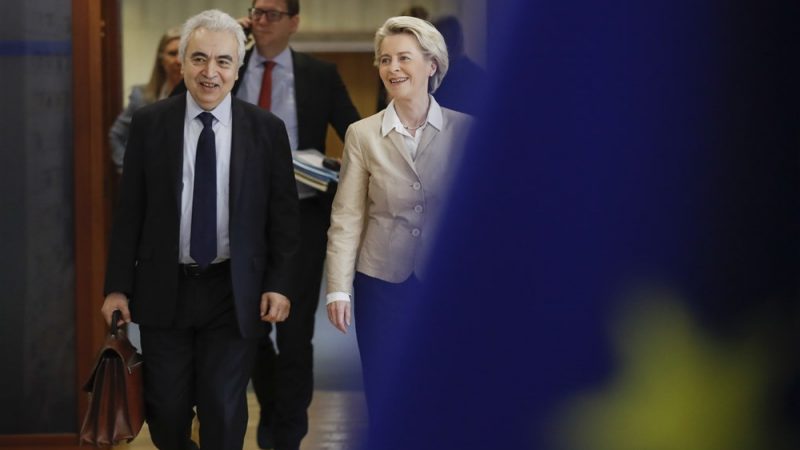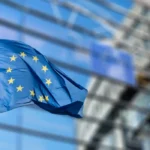As the EU nurtures its ambitions for clean energy generation, reliance on imports of critical materials remains a source of concern in many member states, according to Fatih Birol and Pascal Canfin.
Dr Fatih Birol is Director General of the International Energy Agency and Pascal Canfin is Chairman of the Environment Committee of the European Parliament.
The ongoing clean energy transition has major implications for economies around the world. The next five years will see renewable energy capacity expand as much as in the previous twenty globally, equivalent to China’s current power generation capacity. And by 2030, one in two cars sold in the United States, the European Union and China could be electric.
Faced with the emergence of this new energy economy, many States have embarked on a race to strengthen and diversify their supply chains in low-carbon technologies, from solar panels to wind turbines and even electric cars. , including heat pumps. Many of these technologies rely on a set of critical minerals such as lithium, cobalt and rare earths. Without secure and resilient critical mineral supply chains, energy transitions risk becoming slower and more costly everywhere.
Commodity Markets in Recent Years
Looking at commodity markets in recent years, the risks of a supply shortfall are clear. Soaring prices for copper, lithium and other raw materials have broken the downward trend in the cost of low-carbon technologies over the past few decades — for example, wind and solar have both seen their manufacturing costs rise significantly in 2021. In the same way, the prices of electric vehicle batteries are also seeing a marked increase even as European policymakers seek to incentivize consumers to acquire low-emission vehicles.
In fact, many of the minerals essential to clean technologies are often produced in a small number of countries. For example, China accounts for more than 80% of the world production of graphite used in batteries and occupies a dominant position in the transformation and refining of many other minerals and metals: it transforms almost two thirds of the global amounts of rare earths, critical elements for many technologies, including wind turbines and electric vehicle motors. The Democratic Republic of Congo extracts 70% of the world’s cobalt from its mines. Russia is a major producer of nickel and platinum for batteries. Geographic concentration raises major security issues since possible physical disruptions, trade restrictions, technical failures and other geopolitical events within major producing countries can quickly affect global supplies.
With its “Fit for 55” package and its REPowerEU plan, the European Union is at the forefront of efforts to combat climate change through the rapid deployment of low-carbon technologies. In addition, new European projects for the manufacture of wind turbines, electrolysers and batteries for electric vehicles are multiplying. But as the EU pursues its ambitions for industrial clean energy generation, reliance on imported critical raw materials remains a source of concern in many member states. Although Europe represents a quarter of the world production of electric vehicles, it has few of the materials necessary for this production on its soil.
In order to limit future shocks, a strategy that is both global and bold combining investment, innovation, recycling and rigorous sustainability standards is essential. This objective is at the heart of the Critical Raw Materials Act which will be introduced in March. More investment will be needed, which will be essential to bring new mines and industrial refining capacities into operation both in the EU and in partner countries in order to prevent possible supply shortfalls. Scaling up such investments can be encouraged by a set of public policies to streamline permitting procedures, reduce the risks associated with these types of investments, and facilitate partnerships with diverse suppliers.
Technological innovation, both on the demand side and on the production side, can bring major benefits in terms of security of supply, by developing more efficient use of materials and substitutions, and by unlocking substantial new supplies. For example, the dramatic deployment of solar photovoltaics over the past decade has been made possible by reductions of 40% to 50% in the amounts of silver and silicon needed to produce solar cells. In the field of batteries, innovations in chemistry that reduce the need for critical minerals such as cobalt and lithium must be supported.
Reuse and recycling can also reduce pressure on primary supplies. The security of supply benefits of recycling can be much greater in regions such as the EU that have large deployed clean energy capacities but limited resource endowment. Putting in place better collection systems, harmonized rules on waste and a strong framework for investment in recycling infrastructure is fundamental to positioning the EU as a leader in the field. The regulation on the circular economy and batteries introduced by the European Commission will provide a new legal framework to guarantee standards and objectives relating to recycling. For example, by 2027, new battery production processes must allow the recycling of at least 90% of the cobalt and nickel used, with a 50% threshold for lithium.
Transitions to clean energy must also address the social and environmental risks associated with the extraction and processing of minerals: non-respect of human rights, corruption, CO2 emissions and loss of biodiversity, among others. This is why we welcome the current negotiation efforts on the duty of vigilance legislation.
Such a program, of a truly global scope, will be essential to reconcile the EU’s energy security and climate objectives with its industrial policy ambitions. The EU needs to act quickly, and with ambition, to get ahead in the global race to develop clean energy while reducing its emissions. Critical minerals should not be seen as a secondary topic, but rather as an issue in their own right on the way to a carbon neutral European Union.
This article is originally published on euractiv.fr







